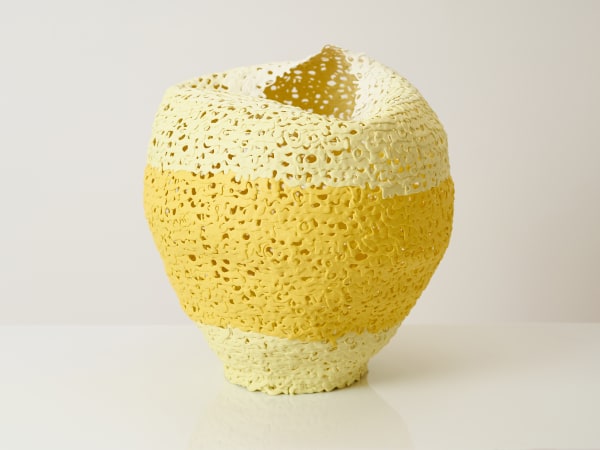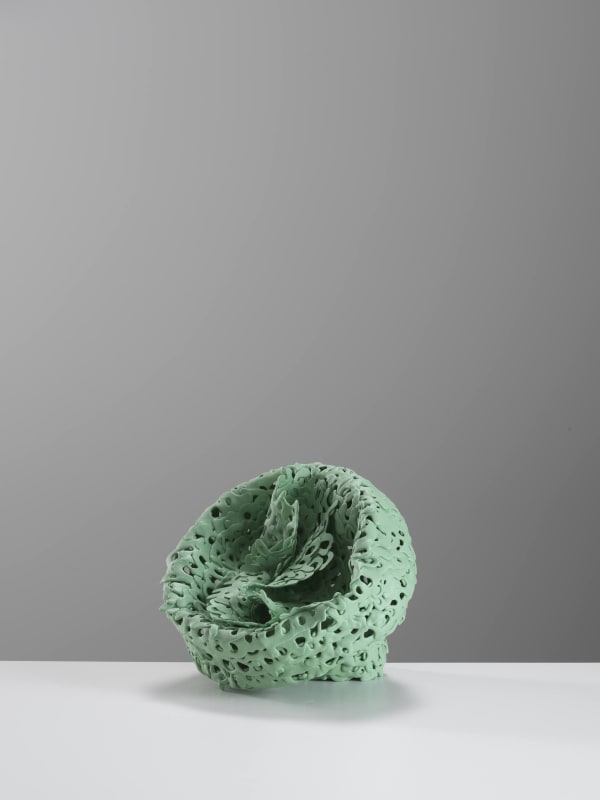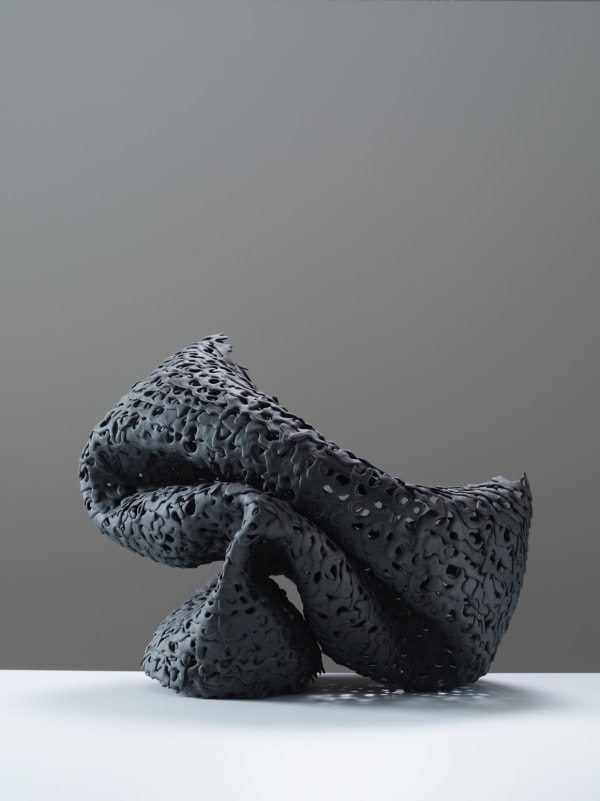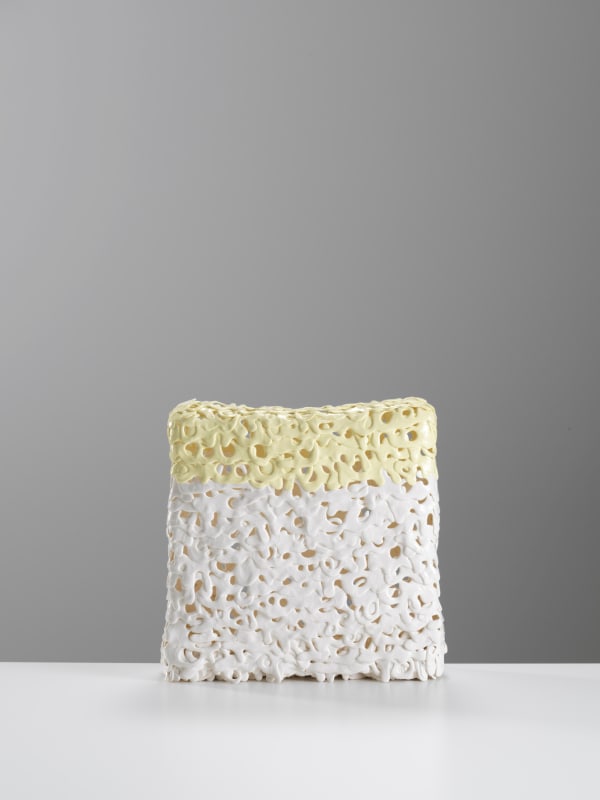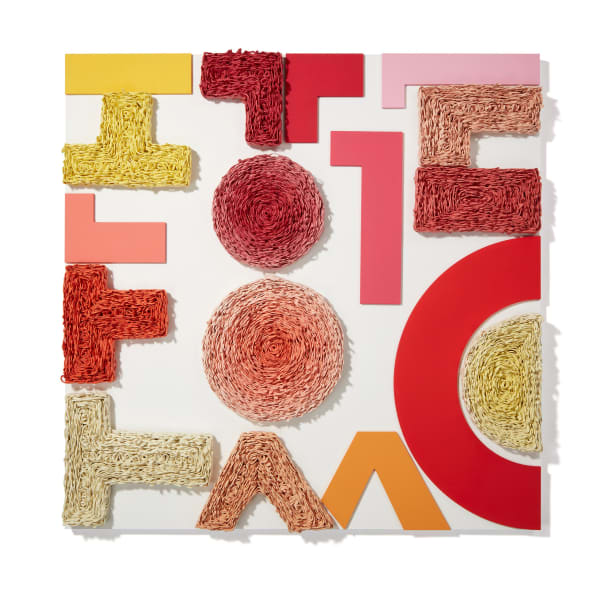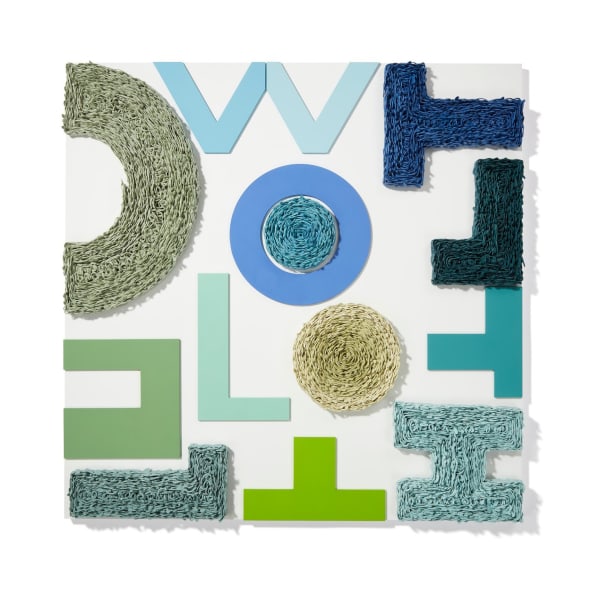-
We have long admired the work of Korean artist, Mimi Joung, adding her porcelain sculptures to the Cavaliero Finn portfolio back in 2019.This year we have seen Mimi's work grow from strength to strength as she continues to add increasingly complex pieces to her Watermelon Sugar series, based on the slim novel of the same title by American author Richard Brautigan. We have also seen the emergence of an exciting new body of work inspired by the poetry of T S Eliot which Cavaliero Finn debuted in June at Artefact, the Design Centre Chelsea Harbour's inaugural contemporary craft show. In this spotlight we take a closer look at both these series and find out more about this talented artist's use of language and literature in her joyfully coloured ceramic sculptures.
-
Girl with the Lantern
In this chapter in Brautigan's novel In Watermelon Sugar, the start of a relationship is explored, where the main character ‘No Name’ catches sight of the girl with the lantern whom we later find out is Pauline.Then I saw a lantern faraway and moving out of the piney woods. The lantern came down a road and then crossed over bridges and went through watermelon patches and stopped sometimes by the road, first this road and then that road.
I knew who the lantern belonged to. It was in the hand of a girl. I had seen her many times before walking at night, over the years.But I had never seen the girl up close and I didn't know who she was. I knew she was sort of like me. Sometimes she had trouble sleeping at night.
It always comforted me when I saw her out there. I had never tried to find out who she was by going after her or even telling anyone about seeing her at night.
She was in a strange way mine and it comforted me to see her. I thought she was very pretty, but I didn't know what color hair she had. -
Mimi explains what it is about this classic 60's novel that continues to inspire her work.
"To me the novel speaks of our dream worlds and the surreal landscape with in the book reflects our personal displacement within imagined utopias and dystopias. Just like so many of our visions and dreams, it collapses in the fire of reality. In the same way, my formal and unfired work collapses in the heat of the kiln. In the work I consider, What is utopia and what is dystopia? Is the desire for perfection a flawed search for utopia? And is the twisted form closer to the real utopia that includes our imperfect lives? "
-
Other available work from the In Watermelon Sugar series
-
Mimi's work is often derived from literature and the artist's personal response to her readings. She enjoys the nature of storytelling embedded in writing - whether it is philosophical, playful or prophetic. She takes these qualities and uses her hands to mould a visual story from the writing. The artworks can be read as landscapes or containers, that hold a narrative that then leaks out into the world through the hearts of her audience.
Mimi believes that colour can play tricks on us, bringing a new layer of meaning to her work and to our perceptions. The story itself can be dark and dystopian, describing the nature of human existence, but colours can draw us towards a new perspective, reflecting the warmth and joy of life that helps us to overcome our negative and contradictory selves. -
The Home Series / 고향
In June, Cavaliero Finn debuted the Home series at Artefact, which was created after the artist read T S Eliot's Four Quartets. In this series of four framed wall works titled Spring, Summer, Autumn and Winter, Mimi takes inspiration from one of the quartets, East Coker, named after the rather quant small village in Somerset which Eliot’s ancestor Andrew Eliot emigrated to the Massachusetts Bay colony in the mid-17th century.Each framed work or season contains the whole poem written out and sculpted together in abstract letter formations within the work. Her knowledge of her material brings about the subtle colours in each piece, some of which gently grade from dark to light, each sculptural element deftly formed while the porcelain is still malleable. Each of the four works incorporate the colours evocative of the season, a bright and hopeful Spring with zingy reds and yellows, a Summer of verdant greens and brilliant blues, a bountiful bevy of rich Autumnal hues and a soft and subtle misty Winter. These exquisite ceramic sculptures are set off against a series of painted fibreboard elements mounted within a a perspex frame allowing light to move freely around the sculptures, casting wonderful shadows throughout the day. -
Mimi Joung Home / 고향 Series
-
We are excited to see the development of further bodies of work as Mimi continues her journey inspired by the three remaining poems written by T S Eliot in Four Quartets.



